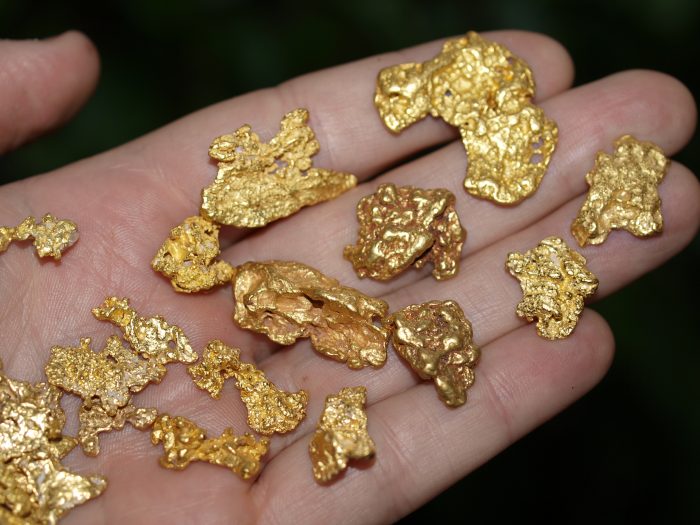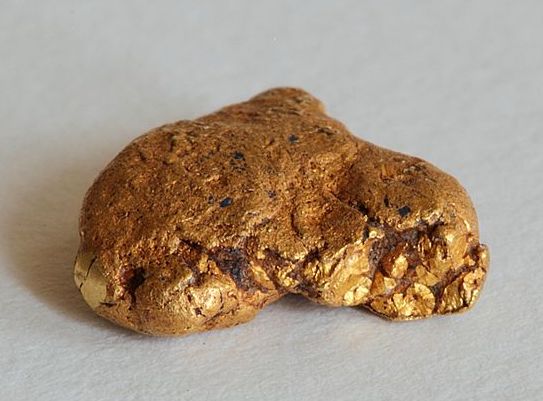
Some of the most successful gold hunters I know today area all using a very similar method. It’s a technique that wasn’t all that necessary back in the 80s and 90s when good gold nugget detectors were first being developed. However, in the past 15 years or so, it seems like this hunting technique is more important that ever.
I call it “hunting the fringes,” and it demands that a prospector abandon their traditional, tried and true spots, and venture out to find new, more productive ground.
The Old Hot-Spots are Played Out
Gold nuggets are not a renewable renewable resource. I don’t care how many much gold was found somewhere in the 1800s, or how many nuggets were found with detectors back in the 80s. Most of that gold is long gone.
Certainly, these areas will still produce some gold. I don’t think an area is ever truly hunted out, and with enough gumption you can find a little bit of gold in just about any mining district in the world regardless of how much is has been previously mined.
However, the easy pickin’s are gone and they aren’t coming back. I know a lot of guys that just can’t seem to abandon their old hunting grounds. Sometimes these are spots that produced many pounds of gold for them back in the day, but now they hardly produce a single nugget for a long weekend hunt.
Those good times are over for these spots. Certainly you can still find gold there, and sometimes even a big nugget comes out of one of these hammered goldfields, but for the most part the bulk of the nuggets are long gone.
New Technology Can Only Go So Far
Every few years, a new gold detector comes out and gets rave reviews (mainly from the dealers who sell them). Now don’t get me wrong… I think most of the gold detectors that have come out in recent years have been good. Some of them are nice improvements over earlier models.
This new technology certainly helps to “renew” an old hotspot. I’ve especially seen this with the newer pulse induction detectors and some of the newer Minelab coils that hit the market in recent years. In the hands of an experienced detectorists, these new tools can give you an extra inch or two of depth and allow them to hit targets that older detectors couldn’t hit.
We are still just talking about an inch or two though. Maybe you will pick out a few small nuggets at depths, but this new “latest and greatest” technology still isn’t going to turn the rich goldfields back to what they were before prospectors had metal detectors.
Recommended: The Garrett AT Max Metal Detector
What is a Fringe Area?
I think I’ve made my point, so now let’s talk about these fringe areas. What I’m talking about is a spot that is outside of the traditional mining area that everyone else thinks about when they head out for a day of prospecting.
The fringe areas are the overlooked spots that are adjacent to known mining districts. They are very likely a continuation of the same geology and conditions that made the known area gold-bearing to begin with, but for whatever reason it was overlooked by most of the previous miners.
If you are looking to make significant gold discoveries, including more gold as well as bigger nuggets and specimens, then I encourage you to start exploring more with your detector and hunting these fringe areas. This will require a more detailed knowledge of geology, mining history, patience, and even luck, but I assure you it will be worthwhile in the long run.
How to Select Productive Areas to Try
Of course there are lots of areas that surround the known mining districts, and finding the right spot to go might feel like you are hunting for a needle in a haystack. So lets take a look at some of the indicators that will help.
Also Read: Explore Historic Mining Sites to Find Gold
Similar Geology
This is probably the best indicator. If no one else has ever found this spot before, then you aren’t going to have the obvious things like mines and prospects to look for. There might be a few small diggings in the area, but probably not many because if their were then other miners would have already hit that spot.
This article titled 77 Gold Prospecting Tips covers the geology of finding gold in some detail. This is the sort of information that can help you in your hunt.
Nearby Dry Areas
Another spot to consider are the dry location adjacent to a major gold-bearing river. There will be many dry gulches that drain into the river. Most placer miners stay close to the river because they need water to work their equipment, so the dry drainages will sometimes not show any sign of past mining. They are definitely worth hunting with your gold detector.
Benches & Hillsides
Since gold naturally concentrates in the bottom of drainages, most prospectors gravitate right to the bottom for all their prospecting.
Now this is certainly a good place to look for gold, but this is where everybody goes. Sometimes gold gets hung up on the hillsides where it has eroded from the vein and never makes it down to the gulley. Natural flat benches can also accumulate a lot of gold that simply doesn’t move on down to the creek or river.
Also Read: Staking a Mining Claim
Use Maps & Historic Mines
Looking at maps can be very helpful because you might be able to see trends in the way that the existing mines are laid out. Since they were often mining the same fault or contact zone in the ground, you might actually notice that the mines are basically lined up, sometimes for miles and miles. This is clearly an indicator that can lead you to additional places to explore as you use that natural line as you guide.

Just Get out and Hunt!
You need to do your research when you start searching for fringe areas. If you don’t, and you just start hunting “blind” you are going to have much lesser chances for success.
You want to do your research, but don’t get so obsessed with research that you never actually get out and swing your detector! Ultimately it takes boots on the ground to find gold. And despite your best efforts with research, you are going to strike out much more often than not. So you need to spend lots of time in the field if you want this method to work.
How to Hunt the Fringes
This method is all about covering lots of ground. Many call this patch hunting. You want to cover as much ground as you can with your metal detector, and only listen for those big, obvious targets. Don’t get distracted by small, subtle targets or natural ground noise. You want to cover ground and find a single gold nugget that will hopefully lead you to many, many more.
Patience is a Must
I can’t overemphasize that you are going to have many long days with no gold to show for it. Most places with no past history of gold mining are that way for a reason… there was little or no gold there to begin with.
This takes a serious mindset shift compared to hunting in those same old areas that you are use to going. Those places might not have much gold left, but you are probably still able to come home with a little bit of gold each time you go, even if its just a few flakes. Hunting the fringes will be many days with no results.
The Payoff
There is a benefit to prospecting for gold using this method. When you finally find a spot with gold, you might be the first person in history to ever find gold their. The potential is huge!
Next: Detecting for Big Gold Nuggets and Specimens in Tailing Piles

